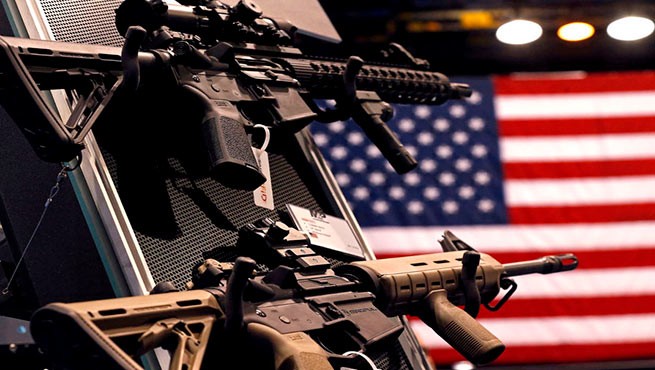Days after Hamas reignited the flames of war in the Middle East, ships carrying American weapons began arriving in Israel: smart bombs, ammunition and detectors for the Iron Dome, the country’s much-touted air defense system.
President Joe Biden’s visit to Israel could well lead to an agreement to buy even more American weapons. But the conflict between Israel and Hamas is the latest example of an international “boom” in armed conflict that has led to soaring profits for the US arms industry.
Even before Israel decided to respond to the Hamas attack, the war in Ukraine and the threat from China felt by several Asian countries led to a surge in global demand for planes, missiles, tanks, ammunition and other military supplies. Rich countries’ struggle to remain militarily competitive has also boosted corporate profits.
Global military spending last year reached 2.2 trillion. dollars and became the highest level at least since the end of the Cold War. Last year, the United States controlled nearly 45% of global arms exports, nearly five times more than any other country and the most since the collapse of the Soviet Union.
The threat that some Asian states feel from China has led them into an arms race with modern systems. The demand is so great that sometimes orders take years to complete. This caused other players to join the game as potential gun sellers.
For example, Poland, which is arming itself massively for fear of intervention by neighboring Russia, recently acquired several missiles made in South Korea. Although the country has committed to NATO to spend 2% of its GDP on weapons, President Andrei Duda said last month that Poland plans to spend 4% of its gross national product on weapons this year. As a rule, the country was allowed to purchase weapons worth $41.7 billion from the United States.
Turkey, which supplies drones such as the famous Bayraktar to more than 29 countries, is also aiming to become a major player in the global arms race.
A sharp increase in sales will help the Pentagon address the rapid production challenges that became apparent after Russia’s invasion of Ukraine. The increase in demand gives them the confidence to speed up production, knowing they can count on more future orders. International sales are now so strong that Raytheon, one of the largest weapons manufacturers in the United States, estimates that by 2025, a third of its production will be directed to customers outside America.
Manufacturing already “locked down” in the United States will keep it busy for years to come. Lockheed Martin, the world’s largest defense company, has signed contracts totaling $50 billion over the past two years for one of its best-known products, the F-35 fighter jet, with countries including Switzerland, Finland, Germany, Greece, the Czech Republic, and Canada. and South Korea. All that remains to be decided is an increase in production capacity, and many are already predicting an expansion of the United States military industry.
A total of $2.2 trillion was spent internationally on weapons last year. This is 23% more than in the previous year:
- 45% of global sales come from the USA.
- $3 billion in military aid went to Israel last year.
- $10 billion in emergency aid to Israel.
- $50 billion in revenue over the last two years from F-35 sales alone.







More Stories
There will be no forced return of Ukrainian men from abroad; the e-office for those liable for military service will start working on May 18
Will Europe forcibly return Ukrainian draft dodgers?
Xi Jinping's leverage: can China encourage Putin to stop the war in Ukraine